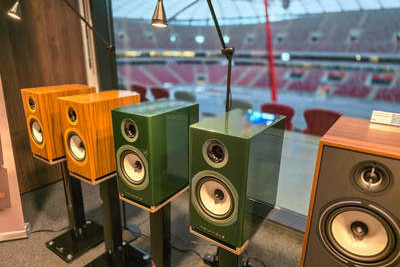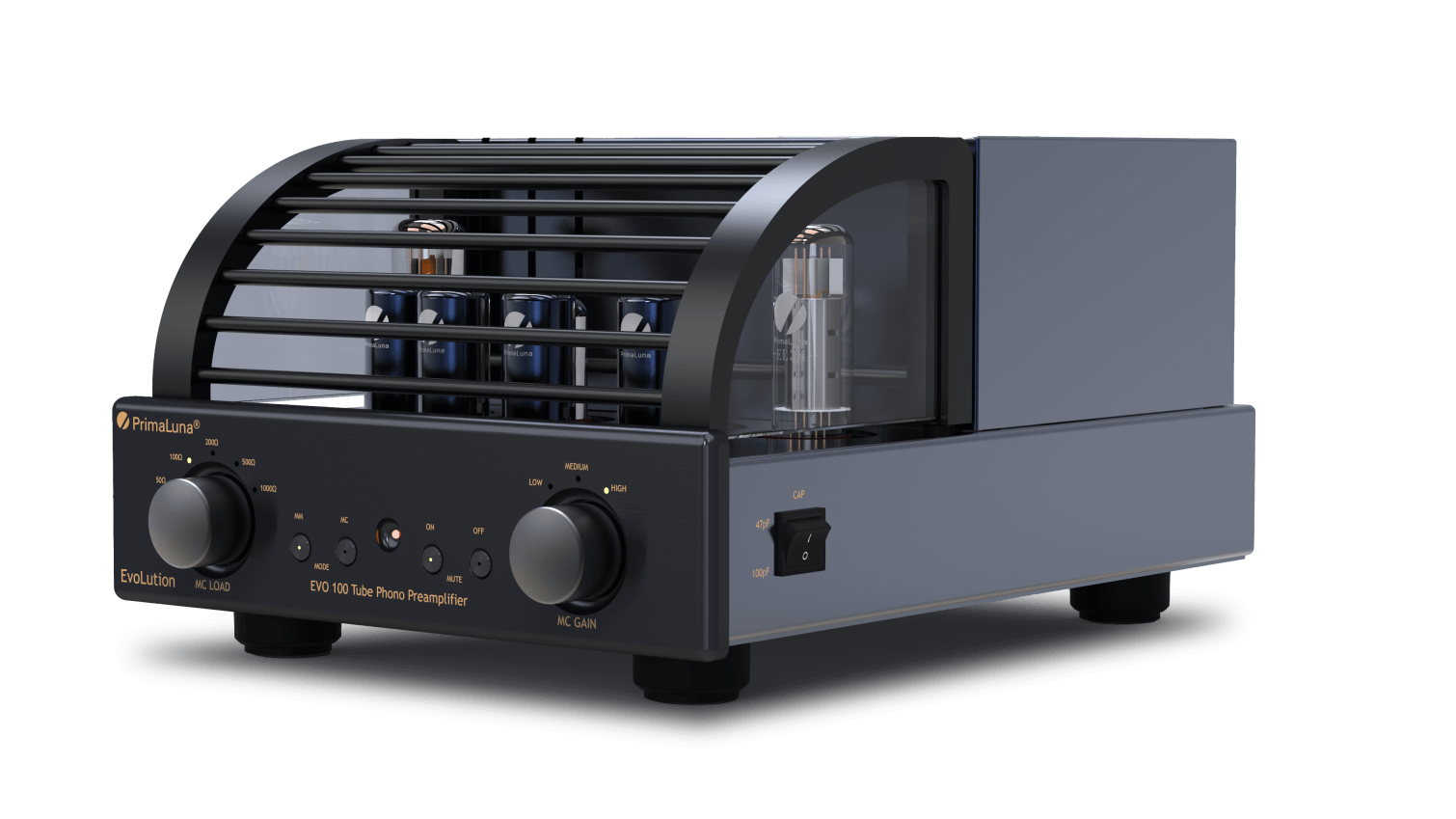
At the beginning of October 2022, one week before the Dutch Audio Event, I received a message from Herman van den Dungen of PrimaLuna. He asked me to pick up a new member of the PrimaLuna family at the end of the show, at the booth of More Music, his Benelux distributor. It turned out to be the EVO100 Tube Phono Preamplifier. "Just listen to it for a while and tell me what you think," Herman said. | Voor Nederlands, klik hier
Well, that certainly did not fall on deaf ears! And so it came to pass that on Sunday evening I found myself putting aside my own tube phono stage to make room for what I believe to be the most important PrimaLuna news since the introduction of their internationally award-winning EVO300 Hybrid integrated amplifier.
PrimaLuna tube amplifiers
I don't know of any brand that has done more to emancipate tube amplification than PrimaLuna. In 2003, Herman van den Dungen, owner of Durob Audio, set out to make tube amplifiers available to every enthusiast, without any compromise to mechanical or audio quality, but with unprecedented ease of use. The concept was a resounding success and barely 20 years later PrimaLuna has become a global brand. Although PrimaLuna specializes in tube amplifiers, two digital devices have appeared on the market over time: a CD player (no longer available) and a D/A converter, both equipped with several tubes, of course. But what was missing was a real phono preamp.
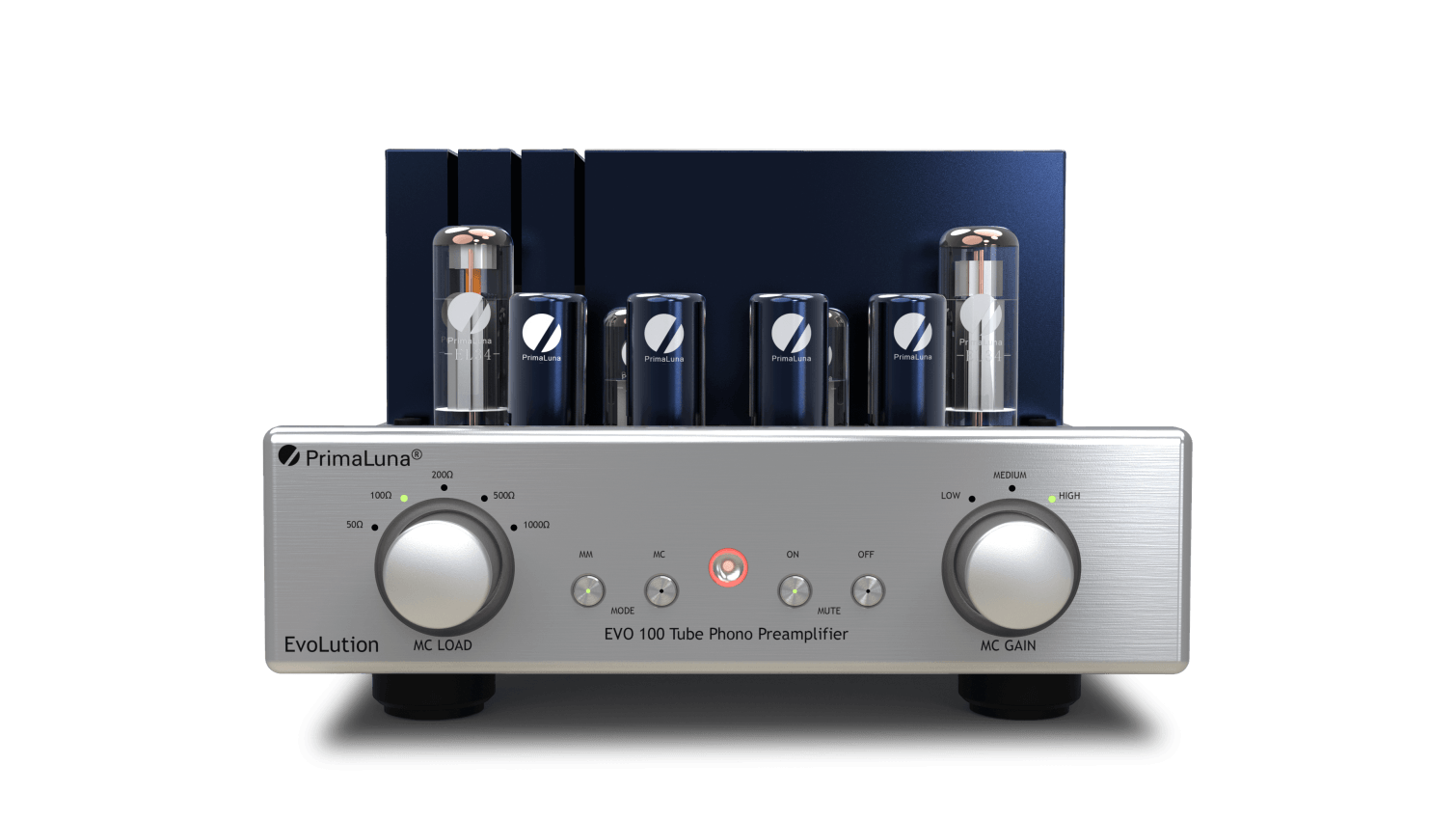
Of course, the optional EVO Phono MM Board - which you can have built into your amplifier - has long been available. The EVO series of integrated and preamplifiers even have a separate compartment under the chassis where the card can be mounted with maximum shielding. But even though it's an excellent phono preamp for the money, this MM-only card has frankly never received the recognition and praise it deserves. Not enough PrimaLuna, perhaps?
Now, after twenty years of waiting (and asking, begging, and whining from the PrimaLuna user community), that has finally changed. Allow me to introduce: the PrimaLuna EVO100-11, or Tube Phono Preamplifier.
PrimaLuna EVO100 Tube Phono Preamplifier: The Technology
Now, if you are not interested in technology, you may want to skip this part, but you are more than welcome to read it anyway. After all, it tells you something about PrimaLuna's design philosophy and allows you to find out just how special this unit is. In any case, here we go. For the design of the EVO100 Phono (as I will call it from now on), Herman van den Dungen once again collaborated with Jan de Groot, who previously designed the remarkable (FET-based) Floyd Design solid-state part of the EVO300 Hybrid.
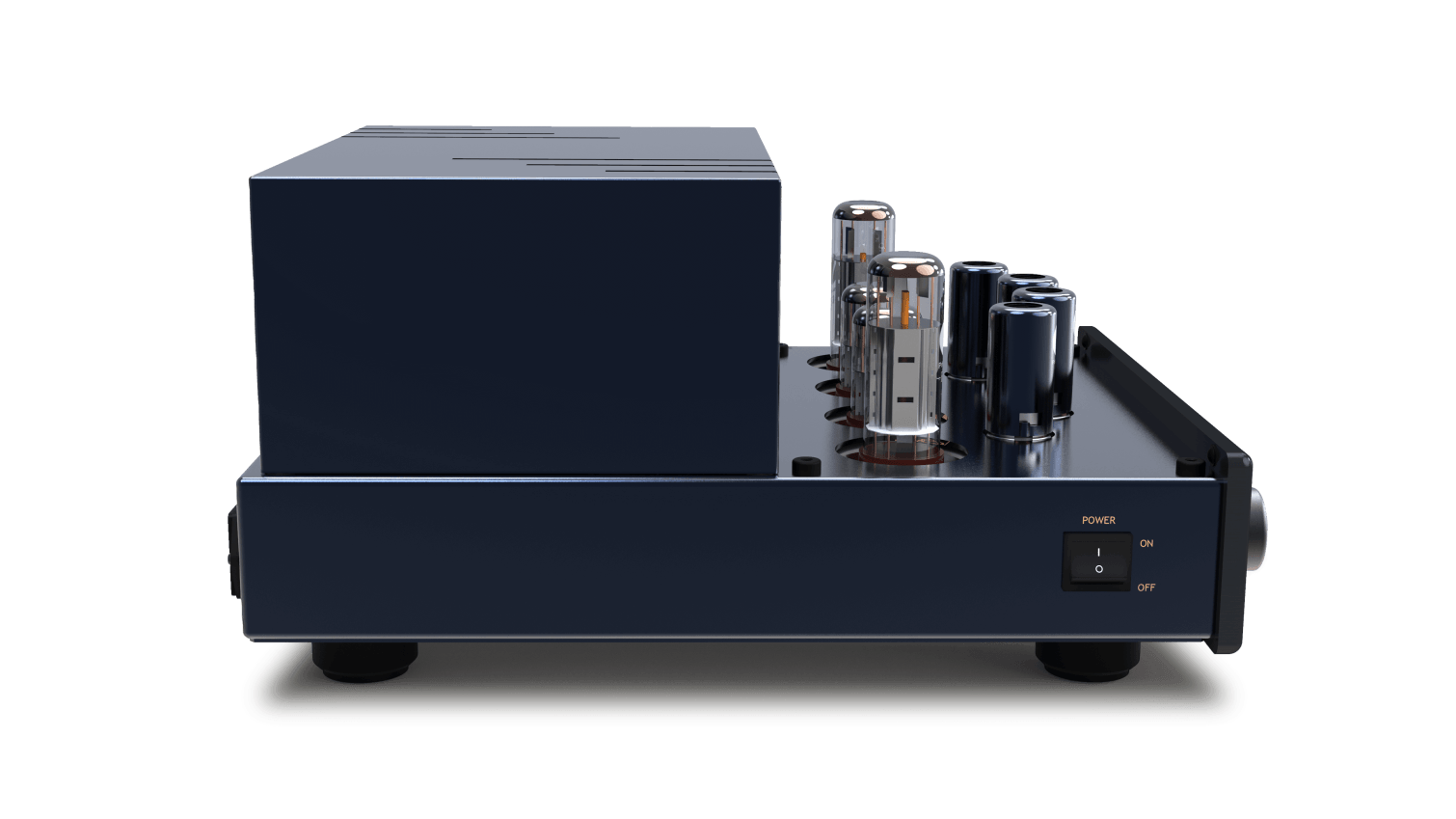
For the EVO100 Phono, the primary consideration was to make the power supply as stable and clean as possible, which is of course a very good idea for a phono preamplifier working with such small signals. PrimaLuna has known for a long time that you can make the "quietest" power supplies with tubes if you use them correctly. And in the end, this results in the most transparent playback The tube power supply in the EVO100 Phono starts with one 5AR4 diode tube per channel for the necessary rectification of the secondary AC voltage. This circuit includes an inrush current limiting circuit with power resistors and fast protection diodes. This means that the current flows more evenly into the unit when it is switched on, which is particularly beneficial to the longevity of the tubes. Next comes the first filter, with a capacitor and an encapsulated choke, which feeds the bulk capacitors through a capacitance multiplier (for extra mains ripple suppression).
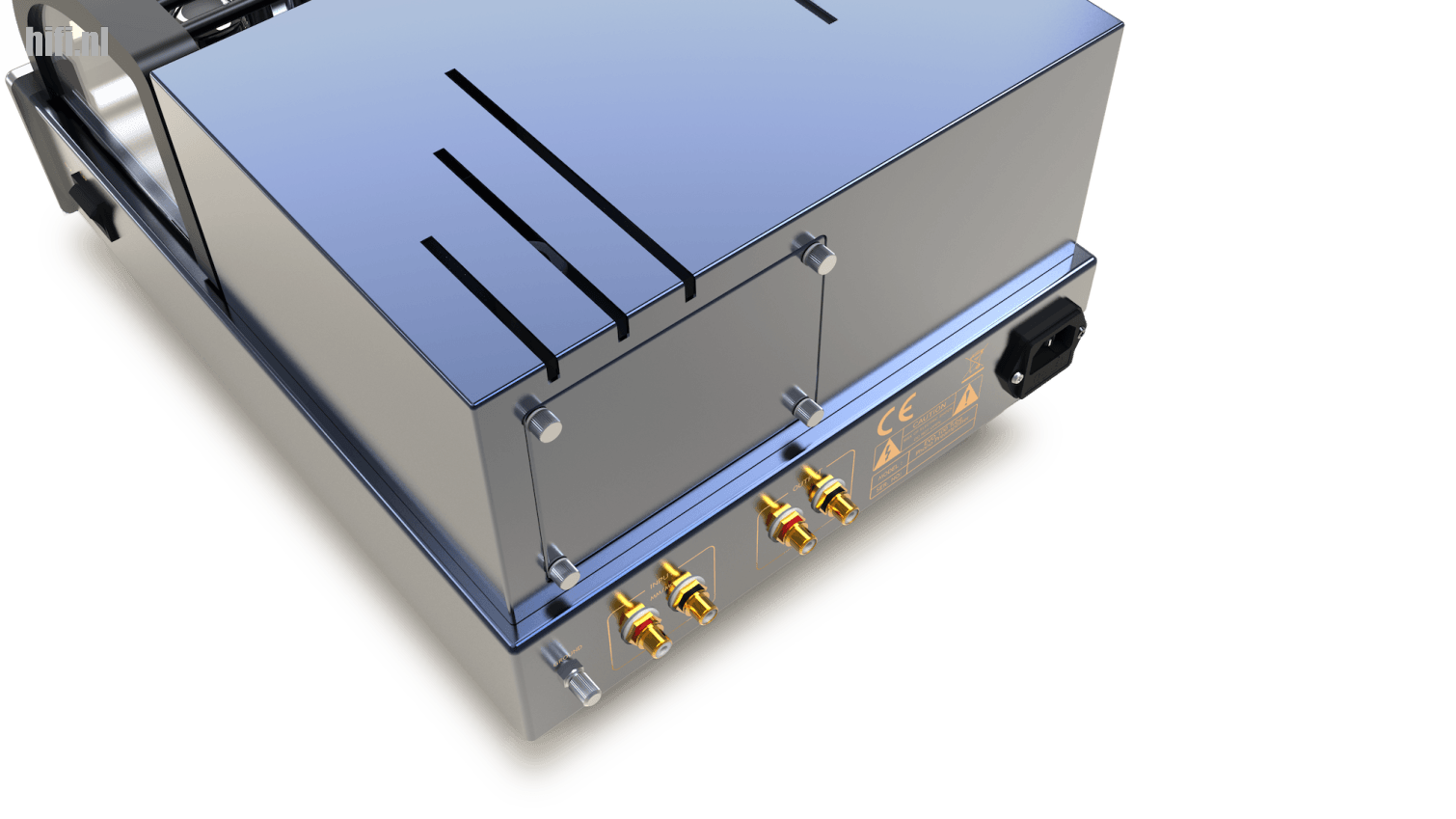
In layman's terms, this is a way of making the unit's power reserve - which is needed for dynamics - cleaner without sacrificing speed. This primary DC supply voltage is then stabilized using a Psvane-made EL34C power pentode, which is not switched for "gain", but used to dampen the primary power supply ripple at 100Hz. The EL34 was chosen because it can supply enough current for the three high-voltage sections in each channel. This gives the power supply a very friendly character and is also very low noise, which is important for the power supply to the tubes in the MM and MC stages.
PrimaLuna EVO100 Phono: the features
The main reason why this phono preamplifier has been given the type number EVO100 is its form factor. It is built into the same cabinet as the EVO100 amplifiers and the EVO100 DAC. According to Herman van den Dungen, no higher models are planned at the moment, but he does not rule it out completely. Indeed, for the EVO100 Phono, PrimaLuna imposed a number of restrictions on itself so that the price would not be too high.
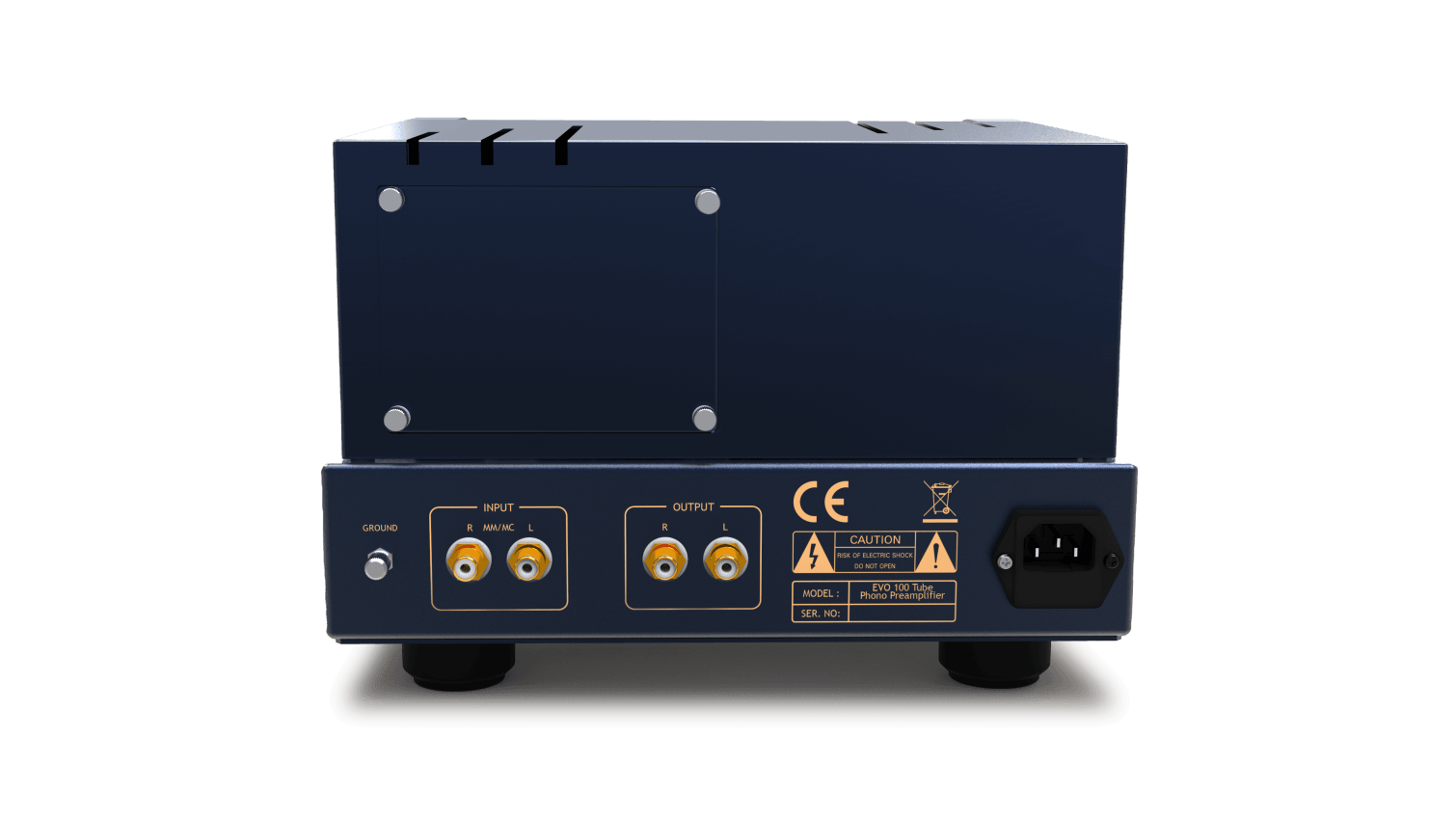
Keeping in mind the brand's original mission, the phono preamp had to be accessible to every enthusiast and offer the majority of users the features they need, with the unique PrimaLuna trademarks of uncompromising design, top-quality components, and a fantastic, transparent but colorful sound. This meant that several "nice to have" features were eliminated on the drawing board, such as a mono switch, a second phono input, balanced inputs, and outputs, 10dB extra gain for ultra-low output MC cartridges, more load impedances for MC, more load capacitances for MM, different RIAA filters and a rumble filter.
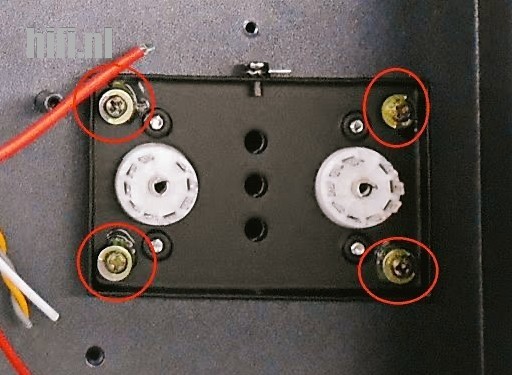
The MC stage is decoupled with rubber dampers, a feature typically found only in very expensive high-end equipment

The MM stage is decoupled with rubber dampers as well
What the EVO100 Phono does offer is a logical and practical five-step adjustable load impedance for the MC input, a two-step adjustable load capacitance for the MM cartridges, a three-step adjustable gain, an MM/MC switch, a mute on/off switch, a power supply with tube rectification and stabilization, a separate power supply section for each channel, optimum shielding by means of internal metal panels, additional RFI/EMI protection by means of aluminum tube shields, which also damp microphonics, a suspended MC stage, also against microphonics, and a DC offset killer in the 230V section. All in all, that's still an impressive list of features.
Tube rolling considerations
A subject often discussed among tubeheads is tube rolling, i.e. replacing the tubes in your amp with the same types from other brands, or even with completely different but equivalent types. I do this myself and have nothing against it, but what I resent is when some 'enthusiasts' immediately pull out the stock tubes without listening to them and replace them with cherished NOS types. Not that I have anything against New Old Stock, on the contrary, but the assumption that the manufacturer (in this case PrimaLuna) is not using the best possible tubes strikes me as rather presumptuous.
Remember that all the awards they have won are based on listening sessions with the original tube complement, so it can't be all bad. Also, PrimaLuna has to consider things like availability, reliability, and price. If you're going to make a series of 100 or 200 amplifiers, you want them all to sound exactly the same. This is simply not possible with NOS tubes as they are hard to come by in such quantities, let alone at an acceptable price. On top of that, PrimaLuna wants to apply a strict in-house selection in addition to the factory selection. So give the tubes PrimaLuna has selected the benefit of the doubt for at least 500 hours, you'll be amazed.

Okay, enough with the preaching, back to the EVO100 Phono. Looking at the amplifier's block diagram, the first thing you encounter is the MC stage. It starts with the switchable resistor network for the load impedance, immediately followed by two low-noise 6922 double triodes from Elektro Harmonix. These tubes are matched and balanced, both internally and between each other, which means that all their triode sections measure exactly the same within a very narrow margin. PrimaLuna deliberately chose not to use a discrete solution such as a solid-state pre-pre circuit or a step-up transformer. You're either a tube brand or you're not.
The tubes of the MC section are located inside the amp's cabinet, behind a "service hatch" on the back, which is secured by four thumbscrews. Behind the MC stage is the MM stage. By selecting MM with the switch on the front panel, the entire MC stage is bypassed and the signal goes directly from the input to the four 12AX7/ECC83 tubes in the MM stage, which also contains the RIAA equalization. The RIAA in the EVO100 Phono is active and is built into the feedback loop of the MM stage. The MM section contains two stages, the first of which is the most important. These tubes have the greatest influence on sound quality and must be as quiet as possible.
For this reason, they are carefully matched and balanced by PrimaLuna. They are the outer two 12AX7s in the V5 and V8 positions. You should not casually replace them with tubes of some old and venerable brand that you have been keeping in a drawer. However, if you can't resist, or if the V5 and V8 tubes need to be replaced at some point, I recommend using selected, carefully matched, and balanced frame-grid tubes with the lowest possible noise and microphonics. Like, for example, the JJ E83CC or the Elektro Harmonix 7025EH. And that was only the first stage. The second stage, or the middle two 12AX7s in the V6 and V7 positions, is a little less critical, but again, low noise and accurate matching are very important. After all, we are talking about high-end.
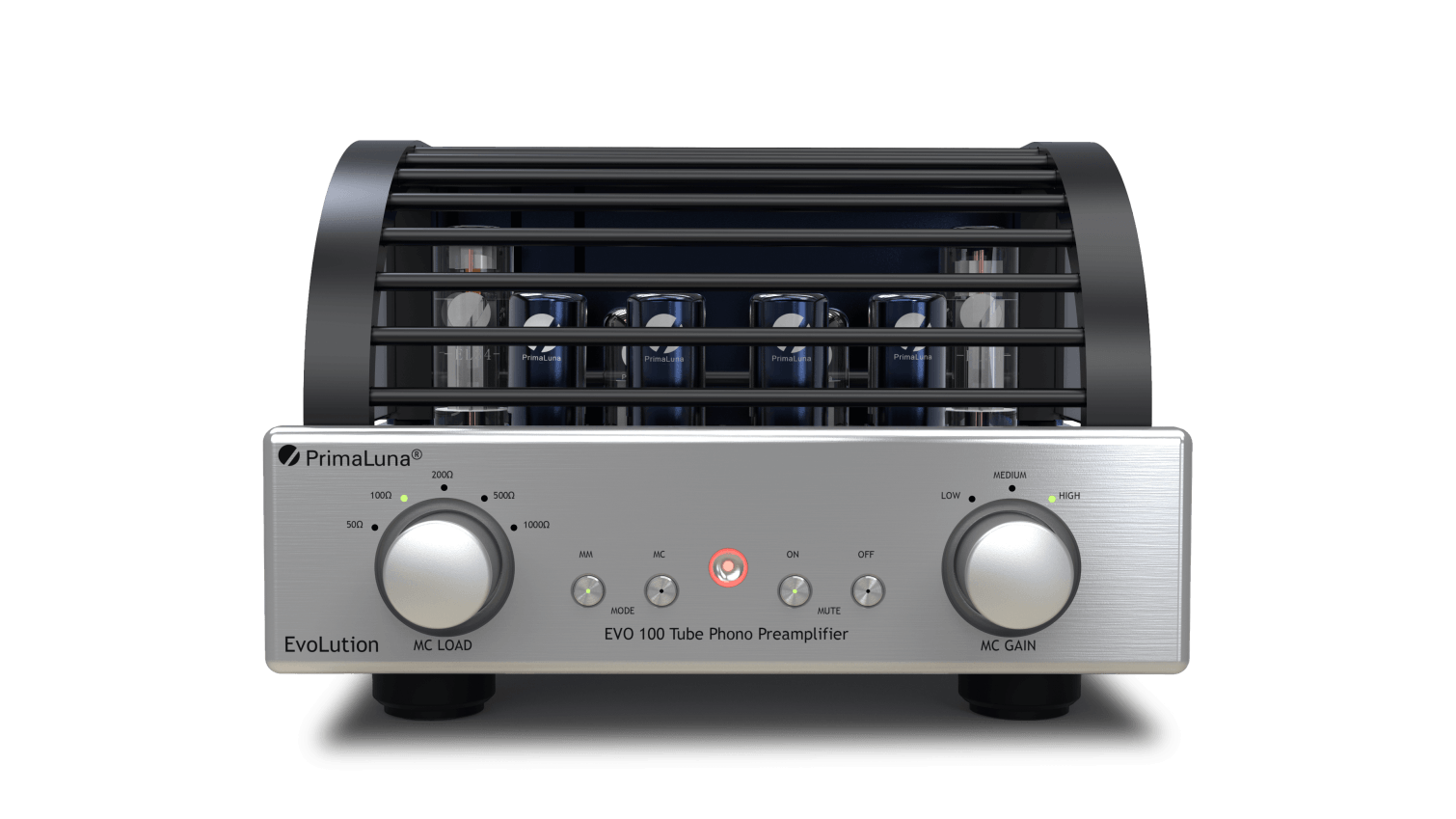
As the EL34s in this circuit are not set for gain but to attenuate AC ripple signals, they will last a very long time. It is recommended to have them measured after about five years of regular use. According to Jan de Groot, it makes little sense to use an expensive NOS model here. At least not for reasons of sound quality. But as most tube-o-philes know, NOS tubes are usually more reliable and last even longer. If you have an exploratory nature, you could use a 6V6, 6L6, 6CA7, KT77, etcetera instead of an EL34. And yes, there might be minimal (!) differences in sound quality.
The same goes for the PrimaLuna 5AR4 rectifiers from Sovtek. It's simply an excellent tube. They have even less influence on the sound than EL34s, but to be fair, NOS rectifiers tend to be more reliable and last a lot longer than contemporary products. But don't be tempted to use exotic rectifiers like the - actually very good-looking - 5R4GYS. These are handsome, tall tubes with shoulders that look a bit like a 300B triode. But apart from the fact that you can no longer use the amp's protective cage, these tubes change the sound, and not for the better, as far as I am concerned. The 5AR4 chosen by PrimaLuna has by far the lowest voltage drop of all rectifiers, a mere -17 volts. Voltage drop causes a phenomenon called sag.
This is something that guitarists particularly appreciate in their tube amps because it adds a kind of compression to the attack of the note being struck, helping them to create their own unique sound. But in a hi-fi amp, you really want the attack of a sound to be as short as possible, to keep the dynamics and timing of the recording as original as possible. Rectifier tubes with a higher voltage drop, such as the 5R4GYS, can give your amp a more 'tubey' character that is a touch (too) soft and smooth, but this is not the sound PrimaLuna was looking for.
Listening to the EVO100 Phono
The EVO100 Phono replaced my long-time favorite, the Phonodude, in my audio system. Another Dutch tube phono stage, designed by Triodedick (Van de Merwe). The turntable was my fully restored Thorens TD 125 with a Jelco SA-750E arm and a Holistic Audio SE cartridge. The amplifier was my PrimaLuna EVO400 integrated, hooked up to my Kharma Ceramique prototype speakers. All cabling was from AudioQuest, and everything stood safely in my Creaktiv hi-fi rack. And with these formalities out of the way, it was time to drop the first record onto the platter.
This EVO100 Phono had already clocked up more than enough hours with Herman and Jan, so burn-in was not necessary. Two sides of a record at low volume (a random pick from the record cabinet - I can't even remember which one) would be enough. Then serious listening commenced. When you have high expectations, the choice of the 'first album' always feels particularly important. I don't usually reach for something 'audiophile', but in this case the recent reissue of Yello's album The Eye seemed like a good place to start.
The pressing is dead quiet and very dynamic, and Boris Blank's production is sublime. Side D of this double album contains only two tracks, the mysterious Star Breath and the Kraftwerkian Planet Dada (Flamboyant), both of which are of reference quality. The rather slow, deep drums and kalimba sounds on Star Breath are in the foreground of an incredibly deep stage where all sorts of things are going on in the background while the percussion rumbles on determinedly. This track contains some extremely deep bass and the EVO100 Phono had no problem making the glasses in my display cabinet rattle.

The music projected a huge bubble of sound that seemed to be higher and wider than my listening room. I realize how inappropriate this comparison may be, but in terms of purity of sound, dynamics, and bass reproduction, it felt like I was listening to a very good 24/96 digital master. Which, of course, it essentially was. Almost no fully analog recordings have been made in the last 40 years, and certainly not by Boris Blank. But that doesn't matter when you hear how incredibly good it sounds from a nicely pressed LP.
The second record I played was Earth Patterns by Szun Waves, a largely improvisational avant-garde jazz masterpiece in which electronic and acoustic instruments engage in furious circular dances to create a whirlwind of sound and rhythm. The intensity of the interaction between the musicians was convincingly reproduced by the EVO100 Phono. As with Yello, I quickly found myself immersed in the music, the iPad for taking notes lying idly on my lap, my eyes closed as I was transported by the music. The colors were bright and saturated, not in an unnatural way like turning every setting on your TV up to 100, but almost palpable and with a kind of inner glow. Textures were easily identifiable and even when the mix became very full, the EVO100 Phono managed to maintain a sovereign overview.
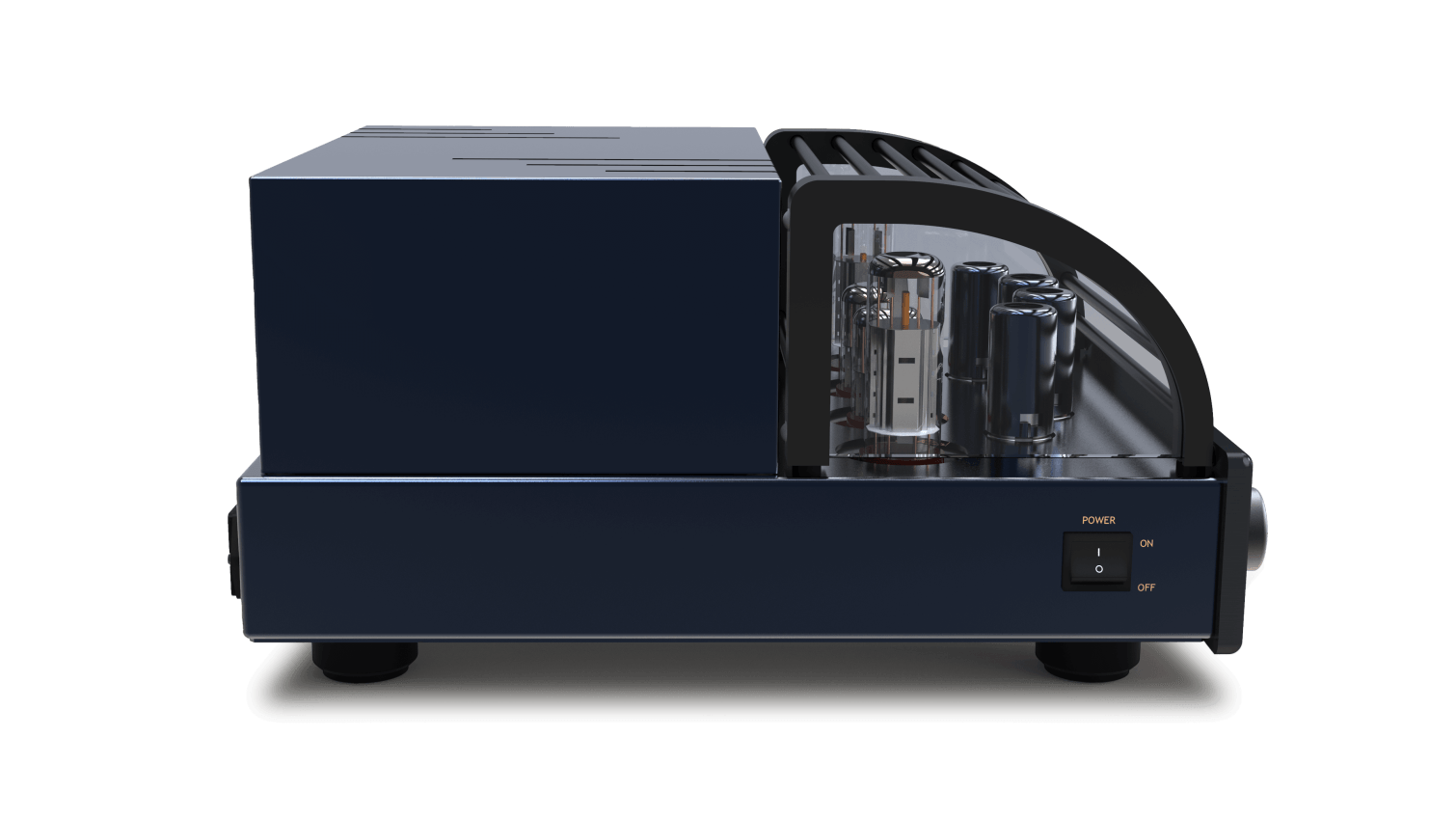
During the listening sessions with the EVO100 Phono, a pattern quickly emerged. The same thing happened with the kaleidoscopic psychedelia of The Museum Of Human Happiness by The Legendary Pink Dots; the music took center stage almost immediately. Objectivists would say: "Well, that's what it's all about, isn't it?". But it's less obvious than you think. It has been quite a while since I added a review component to my audio system that grabbed me from the first moment. No matter what I was playing (big band jazz by Count Basie, the quirky electronics of Kelly Lee Owens, fantastic progressive krautrock by Triumvirat), the EVO100 Phono transformed it into music.
Needless to say, I also listened to several records using an MM cartridge. In all honesty, I used my very inexpensive but impressively over-performing Audio-Technica AT95E, which I keep as a spare - expertly mounted into an Audio Technica AT-LH15H headshell (by me). What struck me about this inexpensive cartridge was how rich, dynamic, and open it made music sound through the EVO100 Phono. This is what you expect from a tube phono stage in this price range, but I have had too many phono stages in my home that made it clear that this modest cartridge was far beneath them. The EVO100 Phono did not smooth things over, nor was there any prettification going on. None of that, it just played the music. This bodes well for more expensive MM or MI/MP cartridges, and probably for high-output MCs too.
Conclusion
The EVO100 Phono is in a different league to my own phono stage, which sounds wonderful but can't hold a candle to the PrimaLuna in terms of musical engagement. This is a characteristic that I also find in the other PrimaLuna gear I own. The EVO400i in the listening room, the ProLogue Three and Four pre and power amplifiers in my office. They all do the same thing. They lend a sense of 'correctness' to the music that is immediately recognizable but difficult to explain. Somehow the music feels right when heard through a PrimaLuna. It invites you to listen and listen some more. And even more.

That is a very attractive, perhaps even essential characteristic you will only find in real high-end equipment. It separates the boys from the men. It was 20 years in the making, but with the EVO100, Herman van den Dungen and Jan de Groot have created a tube phono stage that can bear the PrimaLuna name with pride. And I think it will give other phono stages in its price range a hard time.
PrimaLuna EVO100 Tube Phono Preamplifier
$ 3695 (silver or black front) | Durob Audio, info@durob.nl
Sound Quality: 5 / 5 stars
Features: 4.5 / 5 stars
Overall (rounded) 5 / 5 Stars


